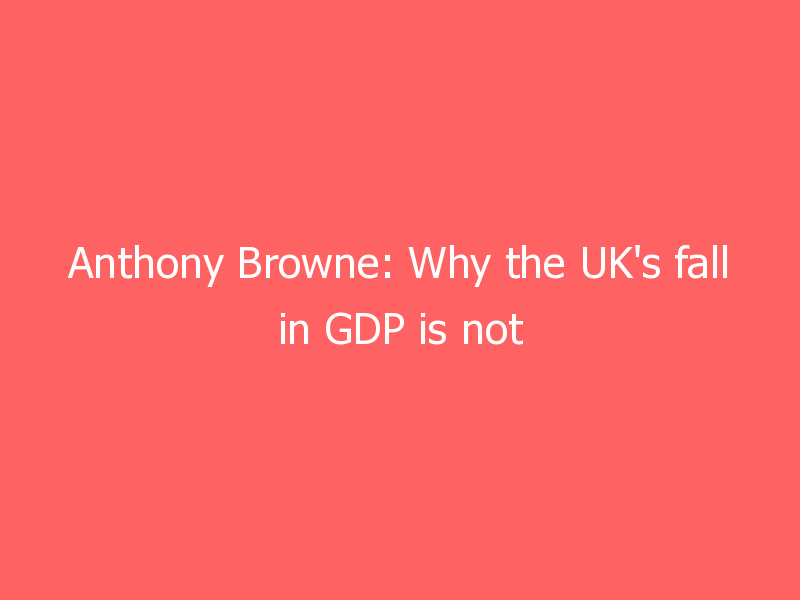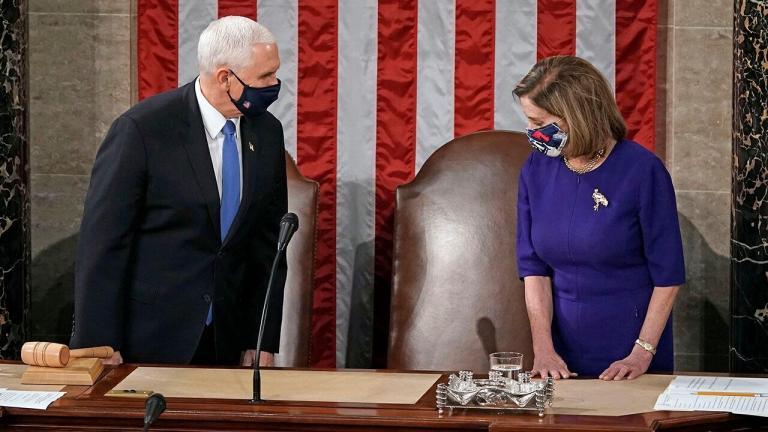Anthony Browne: Why the UK’s fall in GDP is not the worst of the G7, but in the middle

Anthony Browne is MP for South Cambridgeshire and a former Europe Editor of the Times.
There is no doubt that the UK has suffered a severe economic hit as a result of the pandemic, but just how bad? In particular, is it true, as opposition politicians claim, that we not only have the worst death toll in the world, but also the worst economic slump? The short answer is: no.
Yesterday’s headline figure from the Office of National Statistics shows a fall in real GDP of 9.9 per cent in 2020, the largest in history, and certainly the largest among the major economies. There may be particular underlying economic reasons we are worse hit, such as that our service-based economy is particularly dependent on people being able to meet, compared to countries that are more dependent on manufacturing and mining. But the more significant issue is that we calculate our GDP in a different way from other countries, actually following what is usually agreed to be international best practice but is rarely followed.
We have been taking evidence about it at the Treasury Select Committee, and I asked the deputy national statistician to provide internationally comparable measures of GDP. The evidence provided by the ONS to the TSC shows that if you do that, it turns out we are no longer the worst hit in the G7, but right in the middle, with a decline smaller than that of Canada, Italy and Germany, but larger than Japan, France and the US.
The fundamental issue is that the UK measures the public sector from its outputs (eg how many hospital visits, how many school lessons) not from the inputs (money spent), which is what other countries normally do. So when we carry on paying for the public sector but close a lot of it down, then we show a decline in output but other country’s don’t. This does not affect the measurement of nominal GDP (ie in current money terms), but only when it is adjusted to create “real GDP” which supposedly has the impact of inflation stripped out. That real GDP is normally used for international comparisons, but because of the extraordinary circumstances of the pandemic, it is presently highly misleading. The ONS letter to the TSC said: “Current Price or nominal estimates of GDP are not affected and therefore more internationally comparable”.
So what happens when we look at the internationally comparable figures? For most countries, there is little difference between real and nominal GDP. But because of the UK’s methodology, there is presently a huge difference: the decline in real GDP is more than twice the decline in nominal GDP. In particular, from the Q4 2019 to Q3 2020, the UK suffered an official 8.5 per cent decline in real GDP, but only a 3.5 per cent decline in nominal GDP. That is less than Canada and Italy, with declines of over four per cent, and Germany with a decline of just under four per cent. As the ONS puts it: “while the UK’s performance on the volume measure is the weakest, the current price measure puts the UK in a more comparable position.”
None of this makes any difference to businesses, many of which are genuinely suffering a real crisis or have already gone under. I absolutely don’t want to play down their difficulties. But it does mean that opposition politicians are wrong when they say the UK has the worst record in the G7 in its economic response to the pandemic. Despite being harder hit by the pandemic, large doses of government support have meant that our economic hit is in the middle of the G7.
One last thought: if you want to stick with the real GDP figures that makes our slump look exaggeratedly bad by international comparison, then when the system goes into reverse, real GDP figures will make our bounce back look particularly strong. I look forward to opposition politicians congratulating the Government on that.
Originally found on Conservative Home Read More








